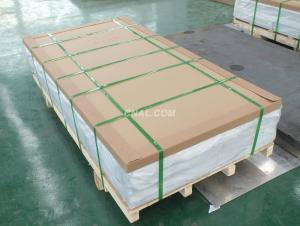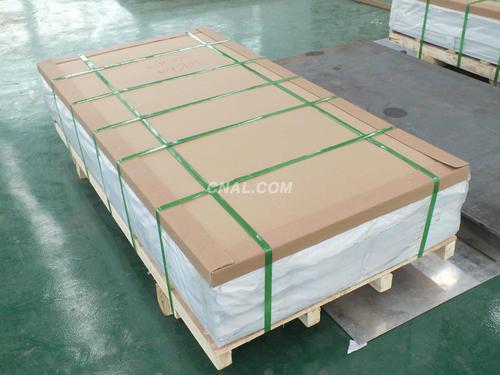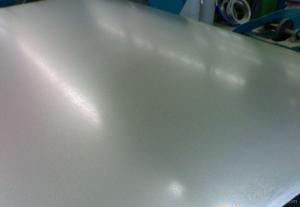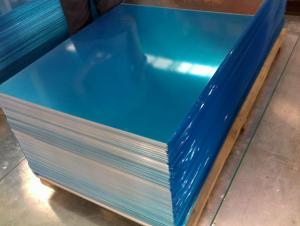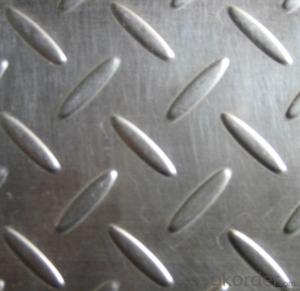Superplastic Aluminum Sheets 1xxx Hot Rolled
- Loading Port:
- China Main Port
- Payment Terms:
- TT or LC
- Min Order Qty:
- 8 m.t.
- Supply Capability:
- 10000 m.t./month
OKorder Service Pledge
OKorder Financial Service
You Might Also Like
1.Structure of Aluminum Sheets 1xxx Hot Rolled Description
Aluminum Sheets 1xxx Hot Rolled is cut from aluminum coils 1xxx. The aluminum content of Aluminum Sheets 1xxx Hot Rolled is 99% at least. It has great ductility, heat conductivity, anti-corrosion and moisture resistance properties.
Aluminum Sheets 1xxx Hot Rolled is widely used for electronics, instruments, lighting decoration, packing industry, house decoration, curtain wall, honeycomb-core panel, sandwich panel, aluminum composite panel and aluminum composite pipes.
2.Main Features of Aluminum Sheets 1xxx Hot Rolled
• Superior quality of raw material
• Reasonable and stable chemical composition
• Accurate tolerance
• Goode mechanical property
3.Aluminum Sheets 1xxx Hot Rolled Images
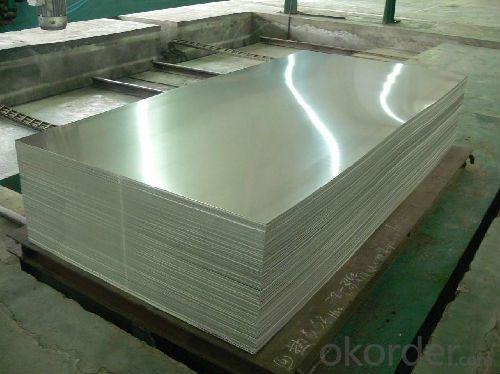
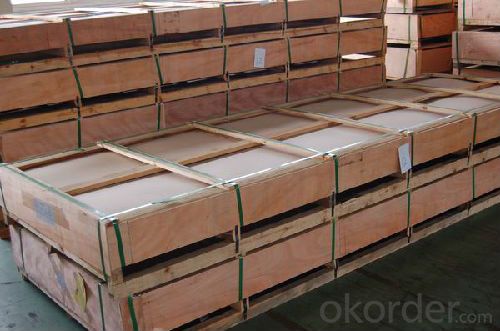
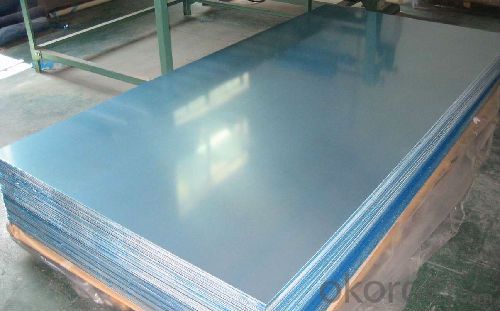
4.Aluminum Sheets 1xxx Hot Rolled Specification
| Alloy | AA1xxx (AA1050,AA1060,AA1070,AA1100 etc. |
| Temper | H14,H16,H18,H22,H24,H26,H32,O/F |
| Thickness | 0.2mm-100mm |
| Width | 30mm-1700mm |
| Standard | GB/T 3880-2006 |
5. FAQ ofAluminum Sheets 1xxx Hot Rolled
A.How to guarantee the quality?
Customers are welcome to our mill to visit and check the products. Besides, we can arrange a third party to test Aluminum Sheets 1xxx Hot Rolled products.
B.When will you deliver the products?
The Aluminum Sheets 1xxx Hot Rolled will be delivered within 35 days after receiving advanced payment or original L/C.
- Q: How do you prevent warping of aluminum sheets during bending?
- One way to prevent warping of aluminum sheets during bending is by using proper techniques and tools. This includes using the correct bending radius, ensuring even distribution of pressure along the sheet, and employing a suitable clamping method to hold the sheet in place during the bending process. Additionally, preheating the aluminum sheet can help to reduce the likelihood of warping.
- Q: Can aluminum sheets be perforated for decorative or functional purposes?
- Yes, aluminum sheets can be perforated for both decorative and functional purposes. Perforating aluminum sheets involves creating a pattern of holes or perforations in the metal surface. These perforations can serve various purposes depending on the specific application. For decorative purposes, perforated aluminum sheets are commonly used in architecture and interior design. The patterns of holes can add visual interest and create unique designs, allowing for the play of light and shadow. It can be used for decorative screens, partitions, facades, and ceiling panels, among other applications. Perforated aluminum sheets offer versatility in design, as different hole sizes, shapes, and arrangements can be used to achieve the desired aesthetic effect. In terms of functional purposes, perforated aluminum sheets provide several advantages. Firstly, they can improve airflow and ventilation in applications such as HVAC systems, air-conditioning units, and speaker grilles. The perforations allow air to pass through while still maintaining the structural integrity of the sheet. Secondly, perforated aluminum sheets can be used for sound absorption and noise reduction. The holes in the sheet disrupt sound waves, reducing noise levels in areas such as auditoriums, concert halls, and industrial facilities. Additionally, perforated aluminum sheets have practical applications in filtration and separation processes. They can be used as screens or sieves to separate particles of different sizes, allowing for the filtration of liquids or gases. These sheets are also used in the manufacturing of various industrial equipment, such as vibrating screens, grain dryers, and centrifuges. In summary, aluminum sheets can indeed be perforated for both decorative and functional purposes. Whether it is to enhance the visual appeal of a space, improve airflow, reduce noise levels, or aid in filtration processes, perforated aluminum sheets offer a versatile solution for a wide range of applications.
- Q: Can aluminum sheets be embossed or textured?
- Aluminum sheets are indeed capable of being embossed or textured. To achieve this, specialized machinery is employed to press or roll the sheet, thereby creating patterns or designs on its surface. The purpose of embossing or texturing aluminum sheets can be twofold: enhancing the sheet's aesthetic appeal or enhancing its functionality by providing grip or augmenting its strength. These embossed or textured aluminum sheets find widespread usage across different industries, including automotive, interior design, and packaging.
- Q: Hey I just noticed that my deodorant/antiperspirant has aluminum in it. I remember reading that this is bad for you. My question is, will this be dangerous for my health in the long run?
- Deodorants do not contain aluminum, only antiperspirants do. The aluminum is used to stop sweating from occurring. There are natural antiperspirants (example Tom's of Main) that claim to stop sweat without the use of aluminum. Aluminum based products have been associated with quite a few health problems: Seizures Breast Cancer Alzheimer's Disease Bone Formation Disorders Kidney Problems Hope this helps.
- Q: How do aluminum sheets compare to steel sheets in terms of weight?
- In terms of weight, aluminum sheets are much lighter than steel sheets. The reason for this is that aluminum has a lower density, making it a more versatile and lightweight material compared to steel. The extent of the weight difference between aluminum and steel sheets will vary depending on the thickness and dimensions of the sheets. However, as a general rule, aluminum sheets can weigh approximately 1/3 less than steel sheets of the same dimensions. This quality makes aluminum sheets particularly suitable for industries like aerospace, where weight is a crucial consideration, as well as for lightweight structures.
- Q: Can aluminum sheets be used for architectural sunshades?
- Yes, aluminum sheets can be used for architectural sunshades. Aluminum is a lightweight and durable material that is commonly used in construction and architecture. It can be easily shaped and manipulated to create various designs and configurations for sunshades, providing protection from sunlight and enhancing the aesthetic appeal of buildings. Additionally, aluminum is resistant to corrosion, making it suitable for outdoor applications and ensuring the longevity of sunshade structures.
- Q: This question asks for a method to measure the thickness of an aluminum sheet.
- <p>To determine the thickness of an aluminum sheet, you can use a micrometer or a caliper, which are precise measuring tools. Place the sheet on a flat surface and measure from one side to the other at multiple points to account for any inconsistencies. Alternatively, you can use an ultrasonic thickness gauge, which is especially useful for non-contact measurements. For a quick estimate, a simple ruler can give you a rough idea, but for high precision, specialized tools are necessary. Always ensure the measuring device is calibrated and used correctly to get accurate results.</p>
- Q: Are aluminum sheets suitable for food contact applications?
- Aluminum sheets are indeed appropriate for food contact purposes. The food industry extensively employs aluminum because of its diverse advantageous characteristics. It is non-hazardous, non-responsive, and resistant to corrosion, thereby ensuring that it is safe to use alongside food. Aluminum sheets can be effortlessly molded into various shapes and sizes, rendering them suitable for a broad array of food packaging and cooking uses. Moreover, aluminum boasts exceptional thermal conductivity, facilitating efficient heat transfer during the cooking or baking process. It is also impervious to light, moisture, and oxygen, creating a protective barrier that preserves the freshness and quality of food. In general, due to their safety, adaptability, and durability, aluminum sheets are a highly favored option for food contact applications.
- Q: What are the different methods of surface cleaning aluminum sheets?
- There are several different methods for surface cleaning aluminum sheets, including chemical cleaning, mechanical cleaning, and electrolytic cleaning. Chemical cleaning involves using solutions or acids to remove dirt, oxidation, or other contaminants from the surface of the aluminum. Mechanical cleaning involves scrubbing or abrasive techniques to physically remove dirt or grime from the surface. Electrolytic cleaning utilizes an electric current and an electrolyte solution to remove contaminants and create a clean surface on the aluminum sheets.
- Q: Are aluminum sheets suitable for architectural roofing?
- Indeed, architectural roofing can indeed be accomplished with aluminum sheets. Aluminum, being a lightweight substance, is resistant to corrosion, which renders it an optimal selection for roofing purposes. Moreover, it is highly durable and capable of withstanding severe weather conditions, such as extreme temperatures, UV radiation, and strong winds. To add to its appeal, aluminum sheets are accessible in various colors and finishes, granting flexibility in terms of design and aesthetics. Furthermore, aluminum proves to be an environmentally friendly and sustainable material as it can be recycled perpetually without compromising its properties. In summary, aluminum sheets exhibit outstanding performance and versatility, thus making them a favored option for architectural roofing.
Send your message to us
Superplastic Aluminum Sheets 1xxx Hot Rolled
- Loading Port:
- China Main Port
- Payment Terms:
- TT or LC
- Min Order Qty:
- 8 m.t.
- Supply Capability:
- 10000 m.t./month
OKorder Service Pledge
OKorder Financial Service
Similar products
Hot products
Hot Searches
Related keywords
